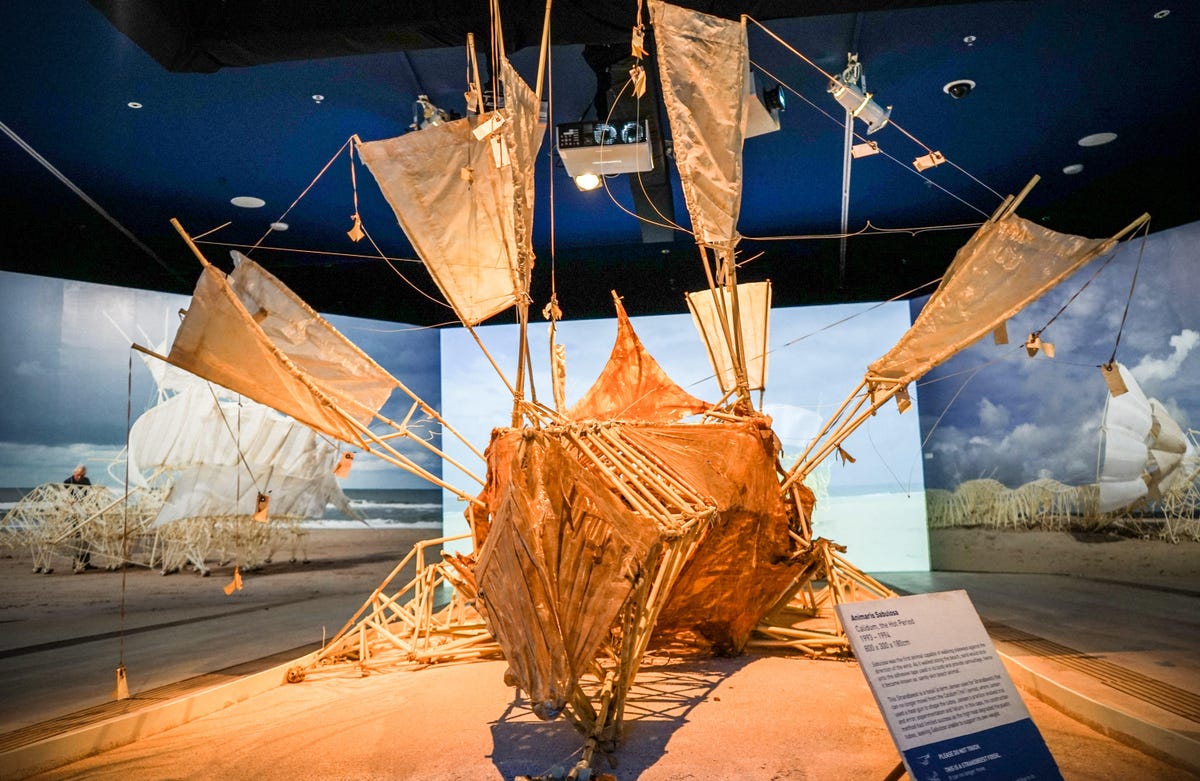The magnificent Strandbeests take a walk down to Southeast Asia
Used to roaming the beaches in Holland, these moving art pieces settle down for a first-ever visit to Singapore's ArtScience Museum.

Wind Walkers: Theo Jansen's Strandbeests
Wind Walkers: Theo Jansen's Strandbeests is a new exhibition at Singapore's ArtScience museum that brings the artists's awesome creations that usually waddle around the beaches of Holland to the sunny island state. Running from June 23 to Sept. 30, the exhibition will let visitors get up close and even try their hands at moving these "animals."
Wind Walkers: Theo Jansen's Strandbeests
Theo Jansen is the man behind Strandbeests, which he builds at the Dutch seaside. His engineering background helps him design the weird and wonderful "animals" that you may see in exhibitions around the world.
Wind Walkers: Theo Jansen's Strandbeests
This is actually a propeller setup for a Strandbeest that enabled it to move a lot faster.
Wind Walkers: Theo Jansen's Strandbeests
Here's another look at the magnificent Animaris Apodiacula.
Wind Walkers: Theo Jansen's Strandbeests
These empty bottles aren't just for show, they store excess air as the Strandbeest moves and then keeps the Strandbeest moving when there's no breeze.
Wind Walkers: Theo Jansen's Strandbeests
While the Strandbeests look impressive from afar, it's up close when you are blown away at the amazing details to make it come alive.
Wind Walkers: Theo Jansen's Strandbeests
One of the tallest Strandbeests ever created, the 43-foot long Animaris Apodiacula features protruding beams that serve to help keep it up upright in the wind as it waddles from side to side. It also features air storage bottles to let it move if the breeze dies down.
Wind Walkers: Theo Jansen's Strandbeests
This is a part of a Strandbeest known as the Animaris Rigide Ancora, which has since stopped moving and is dubbed a "fossil." It served as an anchor and enabled the Strandbeest to always face the direction where the wind was blowing.
Wind Walkers: Theo Jansen's Strandbeests
Each Strandbeest features parts made up of PVC pipe.
Wind Walkers: Theo Jansen's Strandbeests
Here are the various parts used in the creation of a Strandbeest.
Wind Walkers: Theo Jansen's Strandbeests
Theo Jansen also flirted with wood and aluminum.
Wind Walkers: Theo Jansen's Strandbeests
Animaris Siamesis features two bodies twinned together to provide stability and is the largest Strandbeest around.
Wind Walkers: Theo Jansen's Strandbeests
Bottles hidden under the "wings" serve as air batteries to move the Strandbeest.
Wind Walkers: Theo Jansen's Strandbeests
The Animaris Rectus has a mallet on its head that pegs its head into the sand when it detects a storm, allowing it to live two years compared to the usual one at the beach.
Wind Walkers: Theo Jansen's Strandbeests
The Animaris Burchus Primus takes inspiration from a caterpillar, and hopefully, a similar mechanism may be used in space rovers to navigate across rough terrain.

